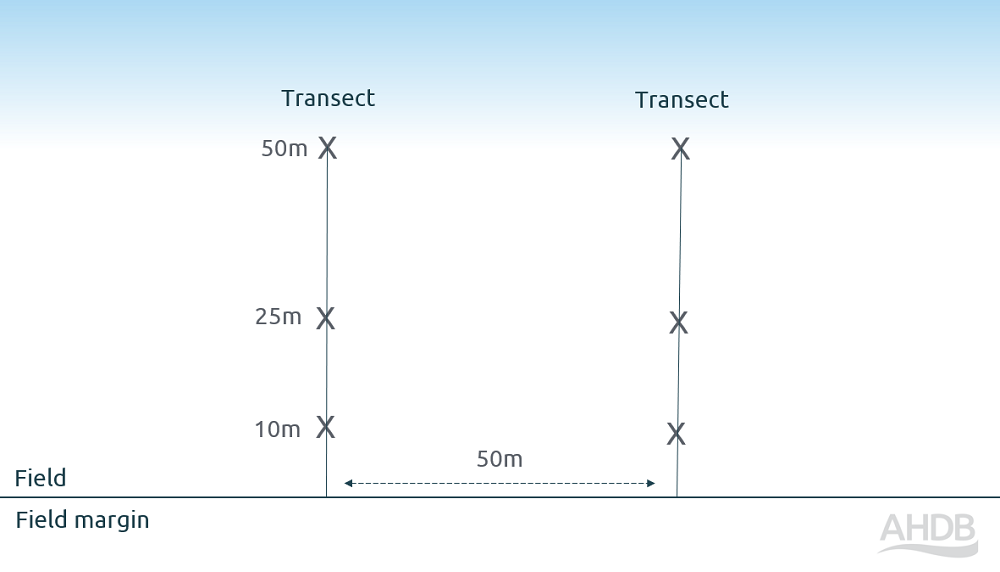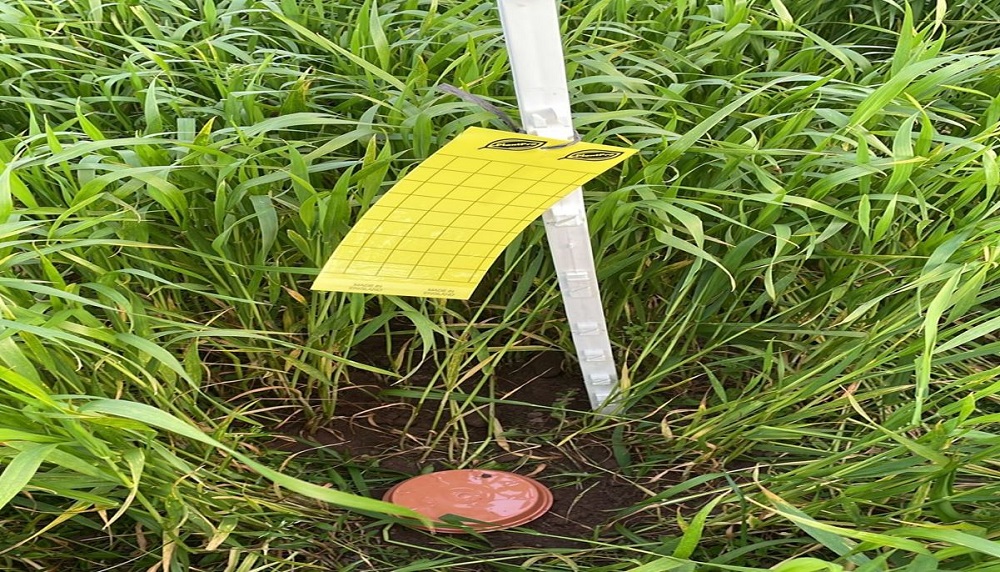- Home
- Knowledge library
- How to use traps to monitor insect populations in the field
How to use traps to monitor insect populations in the field
Yellow sticky traps, yellow water traps and pitfall traps can be used to monitor populations of pests and natural enemies in field crops. Find out how traps were used to assess insect populations in an AHDB-supported Innovative Farmers field lab.
About field labs
The Innovative Farmers network of on-farm trials is run by groups of farmers on their own terms; each trial is called a ‘field lab’.
One AHDB-supported field lab examined how field margins influence the diversity and abundance of insects across fields. The participants followed a protocol. This web page features key elements from the protocol to help you assess insects on your farm.
Using transects and fixed points
A transect is simply a straight line through a field.
Traps can be placed at fixed points along each transect.
The field lab used two parallel transects (50m apart), each starting at the field/margin edge and travelling towards the field’s centre.
The fixed points used were 10m, 25m and 50m (some sites included additional fixed points at 75m and 100m).
 AHDB
AHDB
How to make a pitfall trap
Pitfall traps can monitor ground-active insects, such as ground beetles, rove beetles and spiders.
- Use a plastic pot (about 7cm aperture)
- Bury the pot in the ground, ensuring the pot rim is at ground-surface level
- Add some water to the pot (around a quarter to a third filled)
- Add a sterilising tablet to the water (Campden tablets)
- Add a few drops of washing-up liquid to the water (to help break surface tension to capture insects)
- Cover the trap with an inverted plant pot saucer (supported with wire legs)
How to set a sticky trap
Yellow sticky traps can monitor flying insects, which include aphids and many parasitoids.
In the field lab, each trap (10x25cm) was attached to a stake with a twist tie and positioned with the bottom edge at the top of the crop canopy (with adjustments made as the crop grew).
When to set and check traps
Monitoring is often best done during the warmer months when insects are more active. In the field lab, traps were set in late spring and early summer.
The farmers aimed to check trap catches after seven days (with pitfall trap contents sieved).
In the field lab, insects were identified by ADAS. However, AHDB has a picture-filled encyclopaedia of field pests and natural enemies which can be used to help identify trap contents.
Encyclopaedia of pests and natural enemies
 AHDB
AHDB
Monitoring aphids
Yellow water traps are the most effective way to monitor bird cherry-oat aphids, whereas plant inspections may be the only effective means of monitoring grain aphids, according to an AHDB-funded study (which concluded after the field lab project).
At least one yellow water trap should be placed in each field, within 20m of the field edge and, if present, adjacent to a wood or a treeline.
Traps should be checked after at least three days.
Monitor crops weekly from emergence until the end of aphid migration.
Aim to inspect plants (leaves and stems – to the base) on a relatively warm day and not after frost or rain. Use a magnifying glass to view insects (10–45x magnification is recommended).

